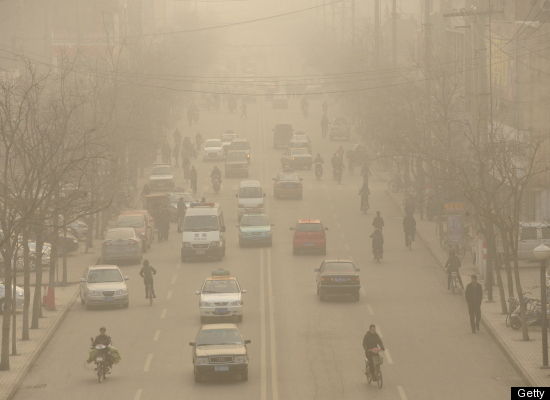Jack Lundee asked if he could do a guest post. I am not fond of algae as a fuel source. Well, I am neutral about it. I think it is counter productive to continue to lust after liquid fuels. Still given the second article I list it is plausible as they say on Myth Busters.
http://everythingleft.wordpress.com/
Fed-Funded Algae Fuel Research making a Strong Comeback
Algae fuel is a biofuel, which is derivative of algae. In 1978, Former President Jimmy Carter pulled the trigger on a 25 million dollar research project into algae fuel production. To make a long story short, the project was somewhat unsuccessful because of the inability of scientists to find a way to make the organisms produce lipids gifted enough to be turned into biofuels, that is, in a high volume, low cost style.
One of the biggest concerns during early research was the fact that burning this algae fuel still released CO2 into the air. Nonetheless, the burning varies much so in that it doesn’t produce any new CO2 emissions like that of fossil fuels. This was a minor concern however, as the fuel was never really able to be inexpensively mass produced.
Now, there are definite signs of hope in the field of algae-based biofuels, as a number of firms and fortune 500 companies are delving into the research, investing billions of dollars. Alternative energy and carbon emission reduction efforts are widespread, funded by large collaborate organizations like the Clinton Global Initiative. Fathered by ex-President Bill Clinton and Doug Band ( http://politicalinsider.blogs.heraldtribune.com/10498/clinton-heaps-praise-on-band-family/ ), the CGI ( http://www.clintonglobalinitiative.org/ ) has made large strides in the San Francisco Bay area, reducing fleet emissions in large numbers. Even more recently, Google made an astounding investment of $38 million dollars into wind farm production.
Ultimately, Exxon Mobile has been one of the largest cooperators/investors into algae-based biofuels, setting aside nearly $600 million dollars as of 2009. In their quest for alternative energy, they joined with Synthetic Genomics Inc., to research and develop next-generation biofuels produced from sunlight.[ http://www.nytimes.com/gwire/2009/07/14/14greenwire-exxon-sinks-600m-into-algae-based-biofuels-in-33562.html ]
But why algae? Here are some major reasons why algae would be a great substitute:
- Grows in a wide range of climates
- Lower water intensity than corn or cellulosic ethanols
- Ability to potentially mitigate CO2
- Liquid fuels formed are the only one of their byproducts
- Byproducts are potentially the most valuable
All in all, the 40 percent lipid yield of some species (according to some studies) can produce up to 10,000 gallons of oil per annum (1 acre). This is far more productive than Soy or cellulosic ethanol, which range between 50 to 2700 gallons. [ http://journeytoforever.org/biodiesel_yield.html ]
As in any study, there are drawbacks, and for most companies, it’s the failure to indentify the right strains of algae for high lipid concentration. Also, there are elements like contamination or predation, and dealing with the complicatedness of de-watering and oil withdrawal; all processes which have yet to be perfected.
On July 1, the department of energy (DOE) announced the investment of $24 million for approximately 3 different research groups. Their mission is to target all these obstacles in the mass production of algae-based biofuels. Sustainable Algal Biofuels Consortium, Consortium for Algal Biofuels Commercialization and Cellana LLC Consortium will all perform separate tasks in hopes of igniting an algae fuel based society.
Jack Lundee – Follower of all things green and progressive.
:}
http://www.usnews.com/science/articles/2010/08/03/converting-algae-into-fuel.html
By Marlene Cimons, National Science Foundation
The algae that keep salmon and shrimp a bright pink might keep jet airplanes and automobiles running someday.
It’s no secret that government, scientists and industry are devoting considerable resources and talent to developing renewable, cost-efficient and environmentally-friendly energy sources, the path to energy independence and to reducing the harmful effects of burning fossil fuels.
One solution could come from the fatty acids produced by certain species of salt water algae.
“All photosynthetic plants take water, sunlight and carbon dioxide and make either sugar or fatty acids,” said Dr. William L. Roberts, a professor in the department of mechanical and aerospace engineering at North Carolina State University. “We want the ones that produce a lot of fatty acids.”
He and his colleagues, four biologists and three engineers, are working on ways to produce and extract these fats from Dunaliella, a microscopic species of algae, and convert them into fuel on a large scale, much larger than is possible today. Their research is funded by $1.99 million over four years from the National Science Foundation as part of the American Recovery and Reinvestment Act of 2009.
The North Carolina State University project is one of several teams in the nation studying the potential of algae as an energy source, and with great promise. This year the Department of Energy has awarded more than $100 million for bio-fuels research, an investment that includes a recently announced $24 million to specifically address the challenges in the commercialization of algae-based fuels.
“This is going to be one of the most important and dominant industries of the future because we will run out of fossil fuel,” Roberts said.
:}
More tomorrow
:}


 Logged
Logged













